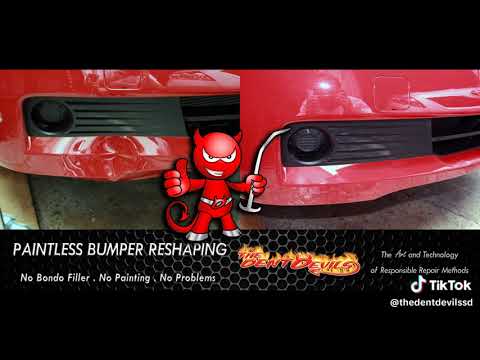
Paintless bumper repair is a method used to fix minor dents, dings, or other superficial damage on a vehicle’s bumper without the need for repainting or using fillers. This technique is part of the broader Paintless Dent Repair (PDR) process, commonly used for repairing hail damage, minor creases, or small dents on a vehicle’s body panels.
How It Works:
Assessment: The damage is first assessed to determine if it’s suitable for paintless repair. The size, depth, and location of the dent and how long it has been damaged are key factors.
Accessing the Damage: Technicians use specialized tools to gain access to the backside of the bumper. This might involve removing parts of the bumper or accessing it through existing openings.
Massage and Reshape: Using a lot of constant heat to relax the plastic combined with a variety of tools, the technician carefully massages and reshapes the dent from behind, pushing it back into its original form. The goal is to restore the original shape without affecting the paint.
Heat Application: Constant heat from an electronic heat gun is applied to the areas to make the plastic more malleable. We Never use a torch as the heat will not go deep enough and there is a high risk of burning the paint and plastic.
Final Inspection: Once the dent is removed, the technician inspects the area to ensure the surface is smooth and that the repair is seamless.
Benefits:
Cost-Effective: Since no painting or extensive bodywork is involved, paintless repairs are generally less expensive.
Time-Saving: The process is quicker compared to traditional methods that require repainting and drying time.
Maintains Original Paint: Because no repainting is involved, the vehicle’s original paint finish is preserved, which is beneficial for the car’s resale value.
Limitations:
Extent of Damage: Not all types of damage can be repaired using this method. If the damage has been in too long or too severally kinked or cracked, traditional repair methods might be necessary unless someone is looking for a less-than-perfect repair.
Material: PDR works best on flexible materials like plastic bumpers. It is not effective on metal bumpers as they are heavy metal meant to protect in an accident.
The Dent Devils owner Eddie Martin has repaired 1,000 of bumpers over the last 41 years.